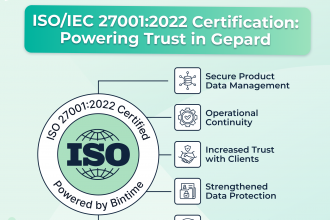What Is EPREL Electronic Seal?
EPREL Electronic Seal refers to a digital stamp or symbol used within the database to authenticate and validate product information. It serves as a visual representation or marker indicating that the product data has been verified and approved by the relevant authorities.
By utilizing the EPREL Electronic Seal, the EU aims to enhance the traceability of products, prevent the circulation of counterfeit or inaccurate information, and facilitate the enforcement of energy efficiency regulations across member states.
Electronic Seals VS Electronic Signatures
In the realm of digital authentication, it is essential to understand the nuances between electronic seals and electronic signatures. To shed light on their differences, take a look at the following table that compares these two distinct methods.
|
Electronic Seals |
Electronic Signatures |
| Definition |
A digital stamp or symbol is used by organizations to authenticate and validate electronic documents or transactions. |
A digital representation of a person’s signature used to sign electronic documents or transactions. |
| Usage |
Primarily used by organizations and government entities for official and legal purposes. |
Used by individuals and organizations for various purposes, including contracts, agreements, and official documents. |
| Authentication |
Provides authentication and verification of the organization or entity that created the seal. |
Provides authentication and verification of the individual who applies the signature. |
| Legal Status |
Often carries legal significance and can be used as evidence in legal proceedings. |
Carries legal validity in many jurisdictions and is recognized as a legally binding representation of the signatory’s intent. |
| Data Included |
It may contain information such as the organization’s name, registration number, and other identifying details. |
Typically, includes the signer’s name, date, and time of signing, and may also include additional identifying information. |
| Representation |
Usually represented as a graphical image or logo that represents the organization. |
Can be represented as a stylized version of the signer’s handwritten signature, a typed name, or a combination thereof. |
| Authorization |
Typically, requires specific authority or permission granted to the organization to use the seal. |
Can be applied by any individual with the intent to sign a document, provided they have the necessary authorization to do so. |
| Multiple Parties |
Can be applied by a designated person within the organization on behalf of the organization. |
Typically, applied directly by the individual signer. However, in some cases, multiple parties may be involved in the signing process, such as in multi-party contracts. |
| Technology |
Relies on cryptographic algorithms to ensure the integrity and authenticity of the seal. |
Relies on cryptographic algorithms to ensure the integrity and authenticity of the signature. |
Types Of E-Seals
There are different types of e-seals, each serving specific purposes based on the context and requirements. Here are some common types of e-seals:
- Entity e-Seals. These seals are typically used by organizations, government entities, or official bodies to authenticate and validate their digital communications, documents, or transactions. Entity e-seals provide assurance of the origin and integrity of the information associated with the issuing entity.
- Document e-Seals. Document e-seals are applied specifically to individual electronic documents to ensure their integrity and authenticity. They serve as a tamper-evident seal, indicating if any changes or modifications have been made to the document after it was sealed.
- Product e-Seals. Product e-seals are used in the context of supply chains or product authenticity verification. They are applied to physical products or their digital representations to verify their origin, integrity, and compliance with specific standards or regulations. Product e-seals can help combat counterfeiting, protect intellectual property, and ensure consumer confidence.
- Time e-Seals. Time e-seals, also known as timestamping e-seals, are used to securely associate a specific date and time with electronic data or documents. They provide proof of existence, integrity, and temporal relevance of the information at a given point in time, which can be crucial for legal, regulatory, or evidentiary purposes.
- Qualified e-Seals. Qualified e-seals have a higher level of trust and legal validity, as they are issued by qualified trust service providers (QTSPs) in compliance with relevant regulations and standards. These e-seals adhere to strict security requirements and are often used in legally sensitive contexts, such as electronic invoicing, electronic contracts, or official government communications.
It’s important to note that the availability and use of specific types of e-seals may vary depending on the legal frameworks and regulations of different jurisdictions. Organizations or individuals seeking to use e-seals should consult the applicable laws and consult with qualified professionals to ensure compliance and proper implementation.
Qualified Electronic Seal For EPREL
The Qualified Electronic Seal for EPREL is the only type of e-seal that carries a high level of trust and legal validity. Issued by qualified trust service providers in eIDAS compliance, the qualified e-seal ensures the integrity and authenticity of product information submitted to the EPREL database. By applying this type of e-seal, manufacturers demonstrate that their data has undergone verification and approval by a trusted third party. Also, a qualified electronic seal enhances consumer confidence, provides tamper-proof protection, and holds legal significance as evidence in legal proceedings, making it an essential tool for promoting transparency and trust in energy labeling and eco-design requirements.
Obtaining a qualified e-seal within the EPREL system involves adhering to specific procedures and requirements outlined by the European Union. Manufacturers and entities participating in EPREL can consult the relevant guidelines and regulations to ensure eIDAS compliance. Collaborating with qualified professionals, they can leverage the qualified e-seal to bolster the credibility and reliability of their product submissions, ultimately contributing to the promotion of accurate energy labeling information and supporting consumer decision-making based on trusted data.
Supplier Verification Process Basics
In the context of EPREL, the supplier verification process plays a crucial role in ensuring the accuracy and reliability of product information. The basics of the supplier verification process involve validating and verifying the identity and credentials of the suppliers submitting product data to the EPREL database. This process helps maintain the integrity of the database and enhances consumer trust in the information provided.
During the supplier verification process, manufacturers, or suppliers are typically required to provide relevant documentation and evidence to establish their legitimacy and compliance with applicable regulations. This may include business registration details, product certifications, compliance statements, or other supporting documents. The submitted information is then reviewed and verified by the relevant authorities or designated entities responsible for managing the EPREL database. Successful completion of the supplier verification process confirms the authenticity and reliability of the supplier’s data, ensuring the accuracy of the product information available to consumers and regulators within EPREL.

